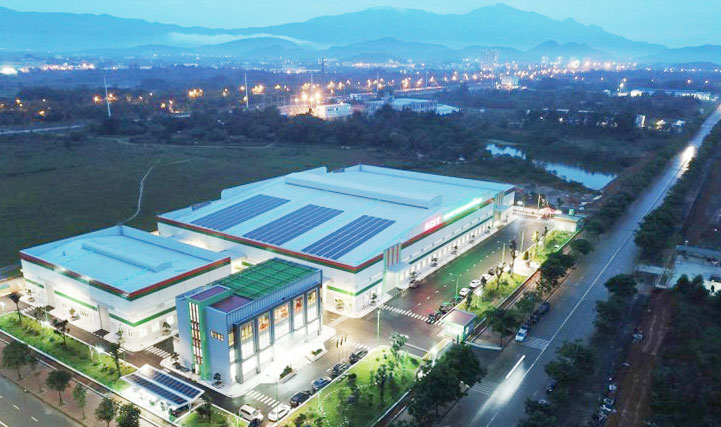29/08/2018
Market observers predict that industrial real estate will move in line with the development trend of a high-value industry to meet the requirements of international businesses in the next two years.

Industrial real estate will move according to the development trend of high-value industries.
The industrial market in Vietnam is undergoing a transition from low-value industries to high-value industries with more skilled and qualified labor.
Industrial Transformation
Vietnam is continuing to attract investors in high-value-added industrial sectors, which include high-tech equipment manufacturing, research facilities, data centers, and cold storage. industry.
The reality shows that the demand for ready-built factories and warehouses is keeping at an optimistic level.
Although there are still quiets compared to the second quarter of 2020, investors' interest in the industrial real estate market is still very large in modern times.
Vietnam can fully hope for a quick recovery of the market after the epidemic is under control.
In the past, Vietnam often focused on attracting businesses that produce low-value items such as textiles or furniture. But now the market is focusing more on attracting high-value manufacturing enterprises.
Industrial real estate also targets high-tech equipment manufacturing, research facilities, data centers or industrial cold storage.
Opportunity for industrial real estate
Mr. John Campbell, Head of Vietnam's Industrial Real Estate Division, said that the transition to attract high-value manufacturing sectors will bring more opportunities and a more positive future for the real estate market. industrial.
In fact, as rental costs increase, the number of firms in low-margin manufacturing industries declines.
Large leather, footwear and fashion factories with 10,000 workers will gradually move to further areas where costs are lower, perhaps even to neighboring countries like Cambodia or Myanmar.
"It can be seen that the current developers in Vietnam are now focusing more on attracting high-value manufacturers, for example, in the field of electronic components or cars from Europe and the US." Mr. Campbell said.
In the long-term view, in order to meet the labor quality requirements of high-value projects, Vietnam needs to continue to invest in education, especially in the fields of IT, mathematics and science.
Although the labor cost in Vietnam is only 1/3 of that in China, the productivity is only 1/3 of the same.
The Government of Vietnam's approval of the proposal to establish a national skills development plan as part of the FDI Strategic Recommendations from 2020 to 2030. This is expected to be one of the key factors in strengthening the confidence of the Vietnamese government. investors and promote the development of the market.
On the other hand, the EU-Vietnam Free Trade Agreement (EVFTA) can be considered as one of the most ambitious free trade agreements that Vietnam has, promising to bring long-term benefits. market here.
According to Mr. Campbell, the benefits of the EVFTA may take a long time for Vietnam to fully benefit, even up to 50 years for the benefits of technology and knowledge transfer to be clearly seen. .
Technology transfer will bring about changes in processes, equipment as well as specialized machines. At the same time, knowledge transfer will assist in the skill development of Vietnamese workers.
As the number of skilled workers and technology develops, the Vietnamese market will become more attractive to manufacturers of high-value industries.
A good example in an effort to attract high-value industries is in the northern key economic region.
In the past 20 years, the North has begun to receive large investment waves with electronics corporations such as Samsung, LG or car manufacturers such as Honda and recently Vinfast.
The emergence of large international corporations is also a lever for the development of the neighboring retail real estate market, when suppliers of spare parts and raw materials often have a need to rent factories with large area. about 1,000-2,000m2 near these big manufacturers.
Notably, Vietnam has recorded high-quality industrial real estate projects that meet the requirements of international corporate tenants in the high-tech sector.
Mr. Matthew Powell, Director of Savills Hanoi, said that the demand for data centers is growing in Vietnam, with data centers located not far from major cities such as Hanoi and Ho Chi Minh City.
Enterprises need to choose a location for a data center that has a stable power source, a clear and systematic technical structure, and the ability to protect against external influences.
Connectivity is also important to ensure that all systems involved in service delivery are not impacted by external physical or weather factors that disrupt service.
Director of Savills Hanoi predicts that within the next few years, the market will witness a strong development of this type of real estate.
Currently, international investors are actively searching for premises to serve the construction and development of data centers in Vietnam.
According to cafeland.vn